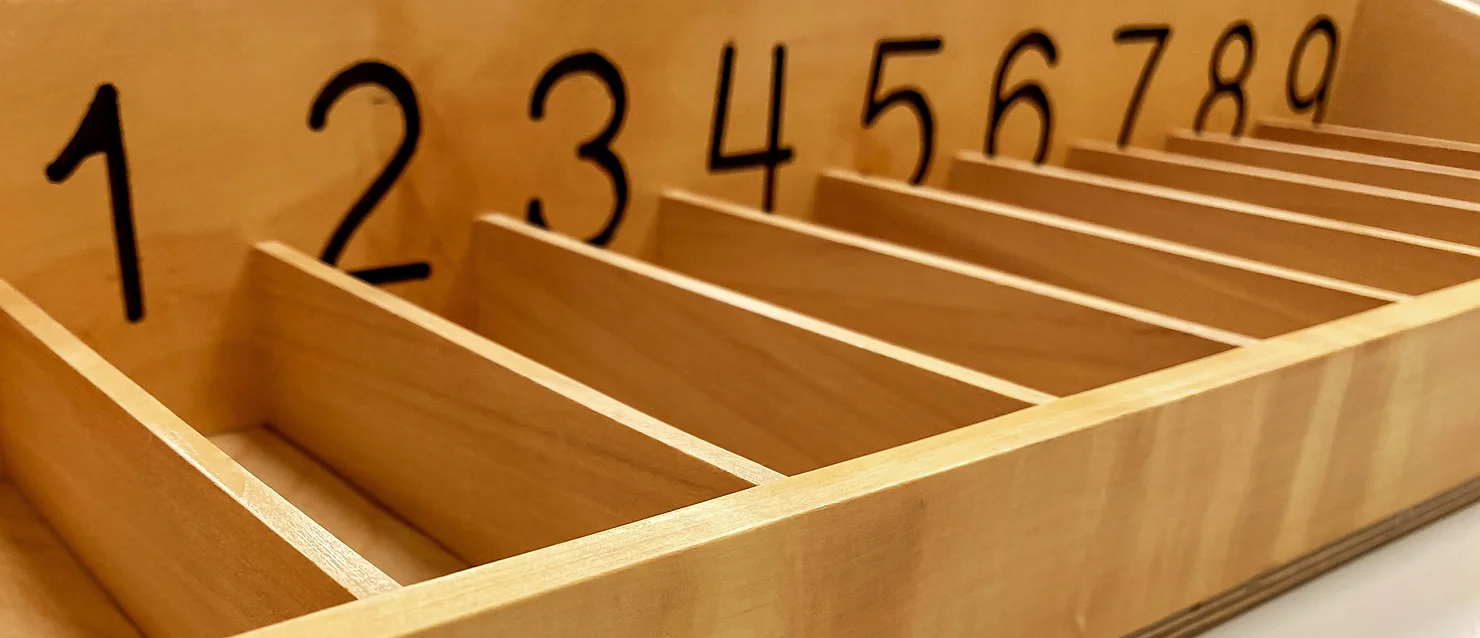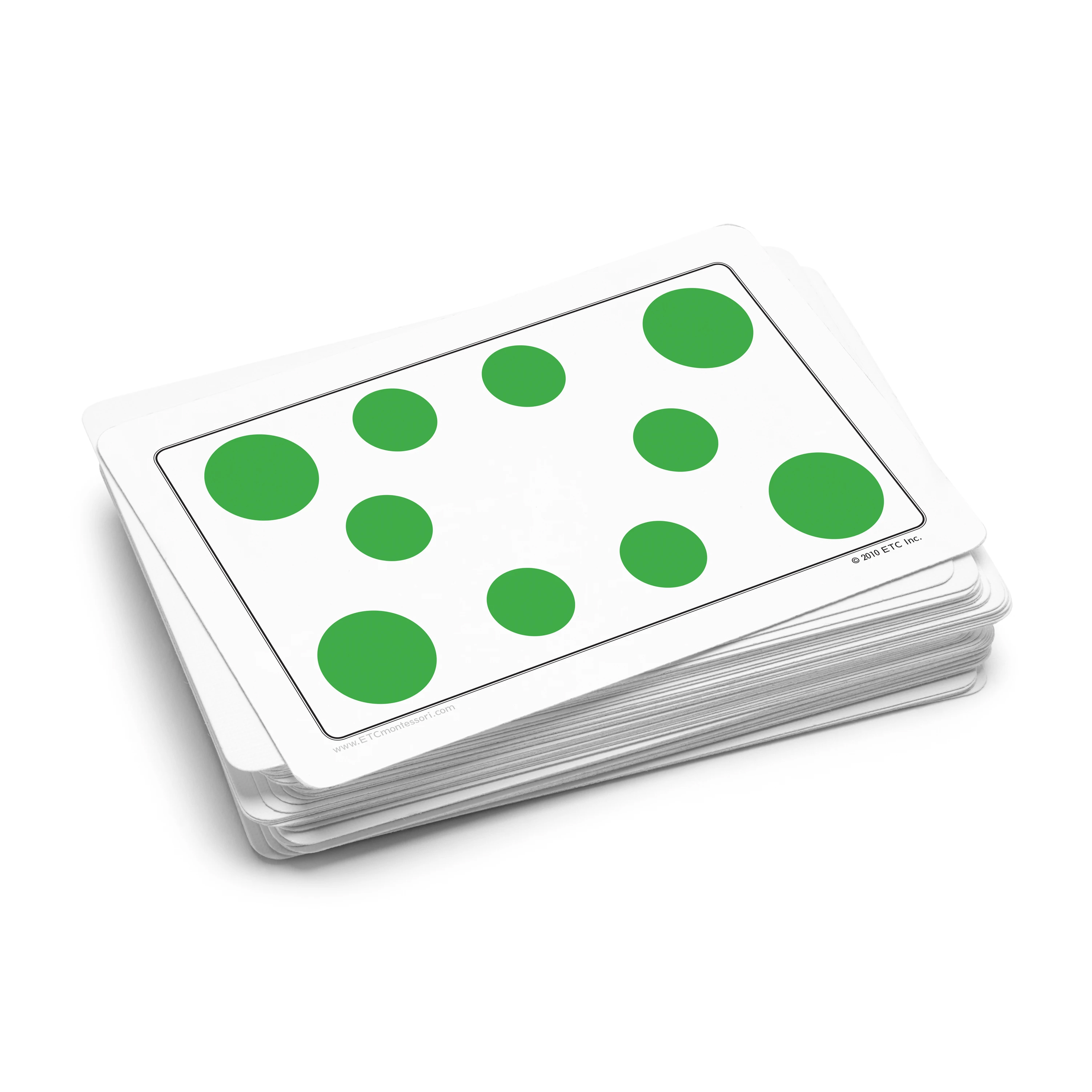
Ever wonder why young children have difficulty remembering the symbols for 6, 7, 8 and 9? There are a couple of reasons that cause this difficulty, each based on how the brain works.
The first thing is that the brain remembers best what came first and remembers second best what came last. This is called the Primacy-Recency Effect.

The second reason is that young children are able to subitize quantities up to four or five. This means that they are able to recognize a given quantity without counting it.
Now, put these two ideas together and you can see why children in the Early Childhood classroom have difficulty with remembering the symbols for 6, 7, 8 and 9. In our presentations for developing numeracy (one-to-one correspondence activities, spindles or the number rods) we spend a lot of time laying out or making sets of quantities that children already know. When they are at the point of learning new information, we no longer have their attention, so they “forget”.
Here’s an alternative. As soon as you are confident that the child knows the symbols 1-5, put those cards, rods, or quantities away. In your presentation, begin with 5 and move forward. Chances are the child will learn 6,7,8, and 9 more efficiently.
Building on this idea, it’s important to differentiate between activities where we want the children to recognize and name a quantity, and when we want them to count a quantity. These are actually two different processes for a young child, relying on two different skills. Naming a quantity means that the child has practice in counting; a skill that requires children to have one-to-one correspondence.
We’ve all worked with children who know how to rote count, but when given a large quantity the child double counts, skips, or repeats a number name while pointing to the objects. Activities that encourage counting have objects that are placed in random order. Activities that encourage naming use patterns to reinforce the name of the quantity.


These cards both represent a set of 10, but the one on the left is more easily named, because the apples are placed in a pattern; the one on the right requires counting in order to name the quantity since the dots used are of different sizes.
It’s important to develop concepts of greater than and less than while the child is developing their numeracy. Asking questions about the sets they make (whether one is more or less than another) will facilitate this. These are preliminary skills to working with a number line. Have children play a game of tug-o-war to introduce the basics of this mathematical tool. Place the game piece on the start circle and roll the die. Have the child move the game piece towards their “end”, the number of spaces represented by the dots on the die. The next player rolls the die and moves the playing piece in the opposite direction towards their “end”. The first player to have the game piece move off the mat, is the winner.


This simple game prepares children for further work in concepts such as greater than and less then, number lines as well as addition and subtraction.

